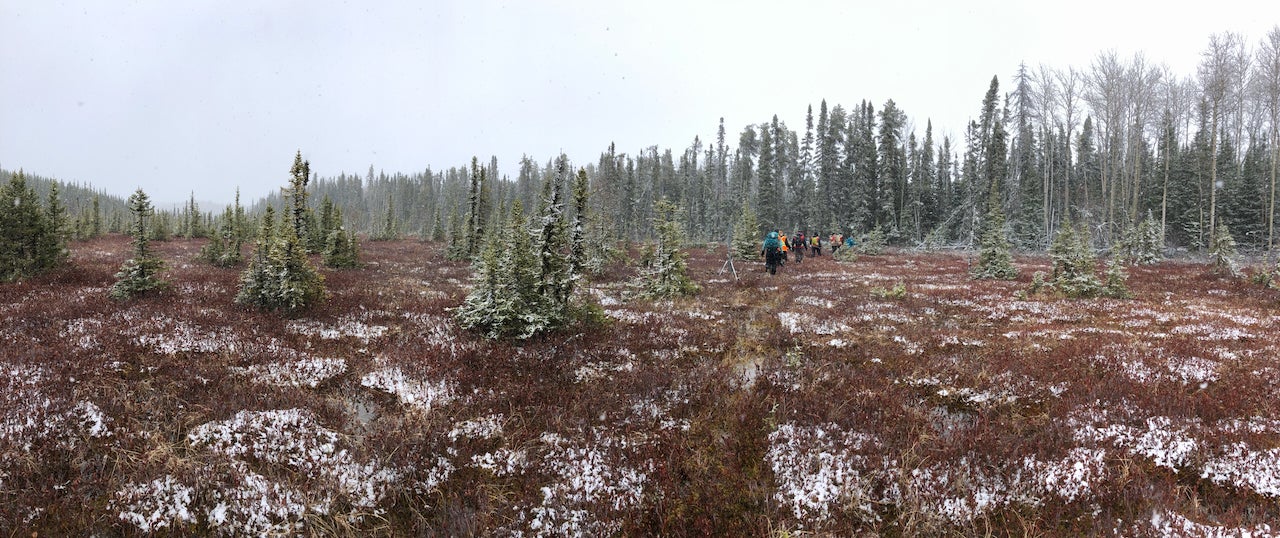By: Katie Hettinga
Even in the quiet of winter (Figure 1), microorganisms are hard at work in peatlands, cycling nutrients such as carbon. As a result, during winter, peatlands tend to release carbon dioxide (CO2) through microbial respiration because the plants that absorb CO2 are dormant. In contrast, plants take in CO2, via photosynthesis, during the growing season (GS). These seasonal dynamics generally balance out, with peatlands acting as net CO2 sinks over the course of the year. In Canada, however, winter temperatures are rising faster than other seasons. Warmer winters result in shorter cold periods and longer GSs. While a longer GS may increase the amount of CO2 peatlands absorb, the warmer conditions could also boost microbial activity, potentially offsetting the extra CO2 absorbed by plants. This shift in seasonal dynamics could tip the balance and weaken the ability of peatlands to act as carbon sinks. Understanding these seasonal changes is crucial for predicting how peatlands will respond to a changing climate and provide insights into their potential role as nature-based solutions.

Figure 1: A peatland landscape covered in snow (Picture taken by Maria Strack)
The Challenge of Gathering Data in Winter
Collecting continuous field data in peatlands is already difficult in summer because of the demanding terrain, and the need to bring along heavy equipment. In winter, these challenges are magnified. Setting up and maintaining field equipment in winter presents additional obstacles, including:
-
Freezing temperatures which can cause equipment failures
-
Shorter daylight hours limiting solar power supply
-
Icy conditions making it hard to access and repair equipment
As a result, winter data is often underrepresented. Even near-continuous monitoring equipment struggles in such conditions, leading to large data gaps for the season.
Overcoming the Challenges
To address these challenges, part of my work focuses on how remotely sensed and modeled data can supplement field data and improve our understanding of the winter (otherwise referred to as the Non-Growing Season (NGS)) CO2 fluxes. Our research on NGS contributions to the annual net CO2 budget in Canadian peatlands analyzes observations from five sites located across three ecoclimate zones. This work aims to:
-
Evaluate how well remotely sensed and modeled data match field data
-
Compare the net CO2 budget of the GS to that of the NGS
-
Assess how the length of the GS and NGS influences net annual CO2 budgets
Preliminary Findings
Our initial results suggest:
-
Field data tends to show a weaker CO2 sink during the GS and a stronger CO2 source during the NGS compared to remotely sensed and modeled data
-
The relationship between NGS emissions and GS uptake varies substantially between sites and years
-
Longer GS periods led to increased CO2 uptake at the study sites
These preliminary results will continue to be explored as part of the Can-Peat project, where we aim to assess the regional vulnerability and resilience of peatland carbon stocks.
For more information, please visit the Can-Peat website.